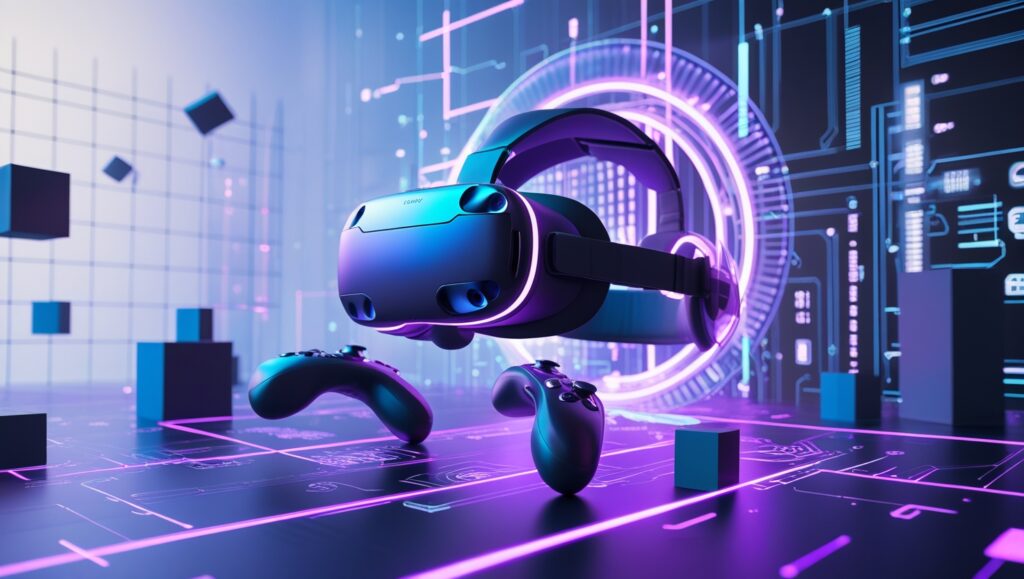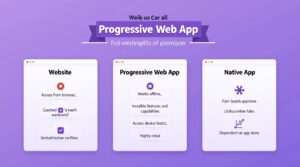click to get service View profile
Master the art of Futuristic UX Design using AI, VR, and AR technologies. Explore practical tools and expert tips to craft immersive, intelligent, and next-gen user experiences that redefine digital interaction.
In the constantly evolving world of technology, you will also witness user needs and expectations variations. In such cases, innovation has a crucial role in fulfilling the demands of the target audiences. That’s where The Futuristic UX Design expanded for a futuristic UX in the form of artificial intelligence, virtual reality, and augmented reality. This way, AI has a crucial role in transforming the UX to deliver better experiences.
This blog will help you understand more about the impact of AI, VR, and AR on UX and how they help businesses satisfy customers.
AI in the UX World
Futuristic UX Design is revolutionizing the tech world, driving business growth through cutting-edge innovations. AI plays a crucial role in delivering seamless, personalized user experiences. By leveraging advanced AI algorithms, UX designers can create smarter, more efficient, and highly intuitive design solutions that redefine the future of digital interactions.
Here are some powerful ways AI is transforming the landscape of Futuristic UX Design and revolutionizing how users interact with technology.
Personalized Solutions
Leveraging AI algorithms enables you to analyze user needs and behaviors, allowing you to deliver personalized design solutions that enhance customer satisfaction. Whether it’s for web, mobile, or other platforms, AI-driven innovations offer smart suggestions and intuitive, user-friendly interfaces. These advancements play a crucial role in shaping Futuristic UX, creating seamless and engaging interactions for users.
Effective Analytics
With a holistic analytical approach powered by AI, Futuristic UX Design enables you to gain deep insights into user needs and behaviors. By analyzing past interactions, AI can accurately identify user preferences, helping you anticipate their likes and dislikes. This advanced understanding allows you to implement data-driven improvements in the UX while offering proactive customer support—even before the user asks for help—ensuring a seamless and personalized experience.
Interactive Interfaces
To make your digital platforms more engaging and interactive, adopting AI-driven solutions like chatbots and voice assistants is essential. These tools enable businesses to interact with customers in real-time, providing instant solutions to their queries. Human-like interactions enhance Futuristic UX Design, making websites more intuitive, user-friendly, and easy to navigate. Chatbots also simplify the user journey, helping users find information quickly and guiding them toward desired actions without any hassle.
For Immersive Visual Experience: Integration of AR and VR

Virtual reality is evolving rapidly, pushing the boundaries of Futuristic UX Design by creating immersive, visually stunning digital experiences. It enhances user engagement by encouraging exploration and interaction, redefining how users connect with the digital world.
Propel the Engagement
Integrating virtual reality into Futuristic UX Design unlocks an unmatched level of user-friendliness and immersion, allowing users to engage with stunning visuals effortlessly. This innovation enhances user interaction and boosts engagement, delivering a seamless experience. VR is widely adopted in industries like gaming, education, and more, where captivating visuals and interactive experiences are essential.
Interactive Design and Prototype
The potential of virtual reality goes beyond expectations, revolutionizing Futuristic UX Design by redefining how users interact with digital content. Traditional point-and-click methods are being replaced by dynamic movements and micro-interactions, creating more intuitive experiences. Combined with the rising influence of Generative AI, these advancements enhance user engagement through smart, adaptive interfaces. This shift in the design landscape pushes designers to explore and integrate VR and AI, shaping the future of UX in the most innovative way possible.
Integration of AR
Augmented reality has the power to fill the gap between the physical and digital realms by connecting the two worlds by delivering exceptional and real-time experiences relevant to the context. The Future of UX Design lies in leveraging this technology to create more immersive, interactive, and user-centric experiences.
Contextual Information
With the right implementation of AR, UX designers can seamlessly integrate layers of contextual data into the real world, enhancing Futuristic UX Design. A prime example is showcasing products in a detailed, interactive view while shopping, allowing customers to better understand their features. This innovative approach transforms user interaction, making experiences more immersive and engaging.
Enhanced Navigation
Navigation plays a crucial role in delivering an exceptional user experience. Poor navigation can frustrate users and increase bounce rates. To create effective design solutions, UX designers must prioritize seamless navigation. Futuristic UX Design leverages augmented reality to revolutionize navigation by providing real-time, interactive directions. This innovation is especially beneficial for large spaces like shopping malls and museums, where users often struggle to find their way, enhancing both convenience and engagement.
Interactive Learning
Education and training have undergone a massive transformation, shifting from traditional methods to more interactive and engaging experiences. Futuristic UX Design plays a crucial role in this evolution, with augmented reality enhancing learning by simplifying complex topics and making them easier to grasp. AR brings subjects to life—like using 3D models to help students visualize human anatomy—creating immersive, hands-on educational experiences that redefine how knowledge is delivered and absorbed.
Break the Boundaries to Create Exceptional User Experiences
With Futuristic UX Design at the forefront of technological evolution, businesses are striving to address user needs in innovative ways. The integration of AI, VR, and AR serves as a powerful bridge to connect with the target audience, enhancing engagement and satisfaction. By leveraging these advanced technologies, brands can push boundaries and create exceptional digital interactions that redefine user experiences.
In the era of rapid technological advancements, Futuristic UX Design is essential for staying ahead in the industry. UX designers must continuously evolve, adopting the latest trends like AI, VR, and AR to create visually compelling and intuitive experiences. As technology reshapes digital interactions daily, delivering innovative and user-centric designs will set businesses apart from the competition.
Conclusion
Futuristic UX Design is no longer a distant vision—it’s happening now. AI, VR, and AR are reshaping how we interact with technology, creating more immersive, personalized, and meaningful experiences. For businesses, integrating these technologies into UX design is crucial for staying competitive and delivering user-centric solutions.
The future of UX is exciting and full of possibilities. Are you ready to embrace these innovations and design experiences that truly resonate with users?

